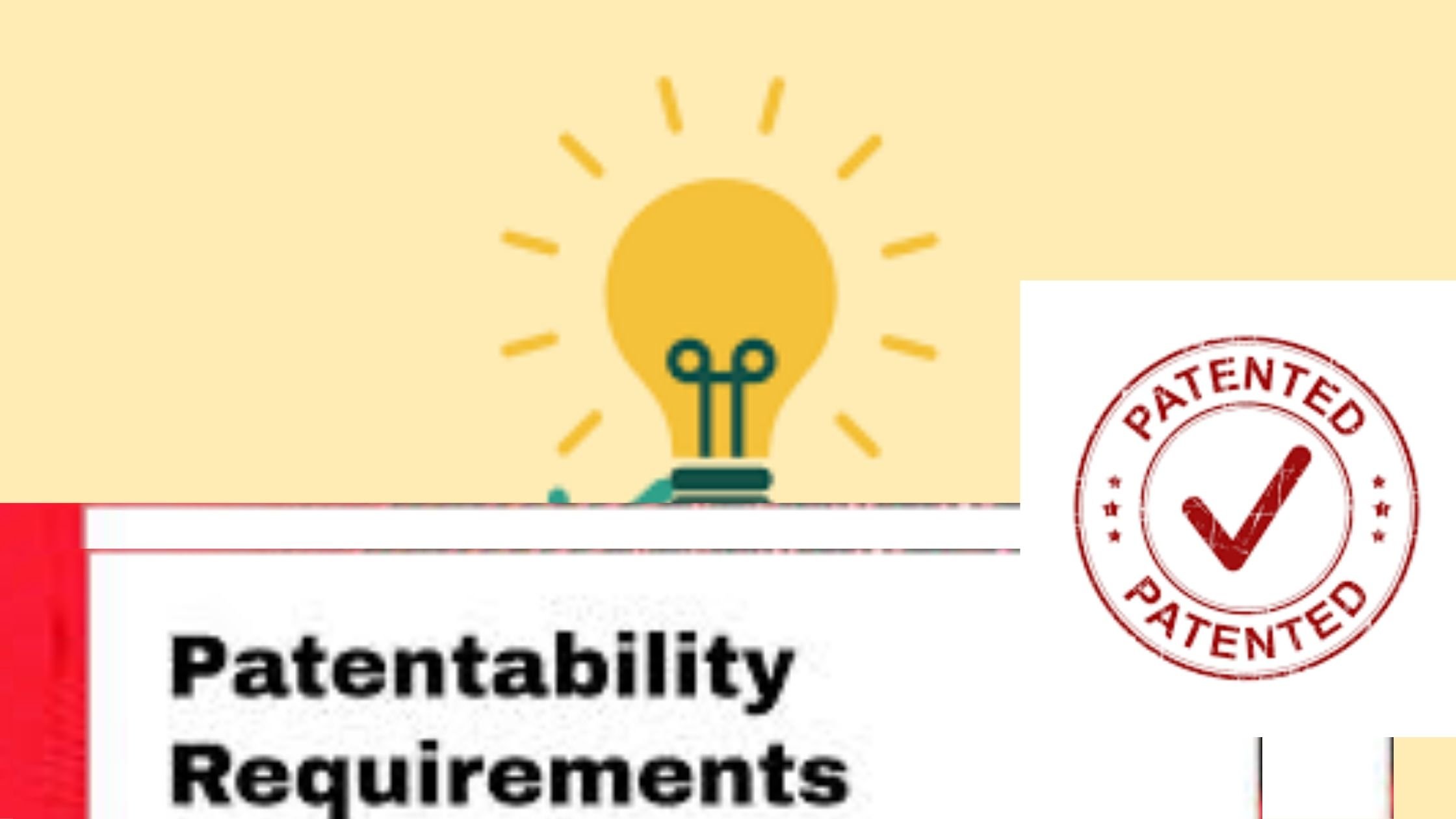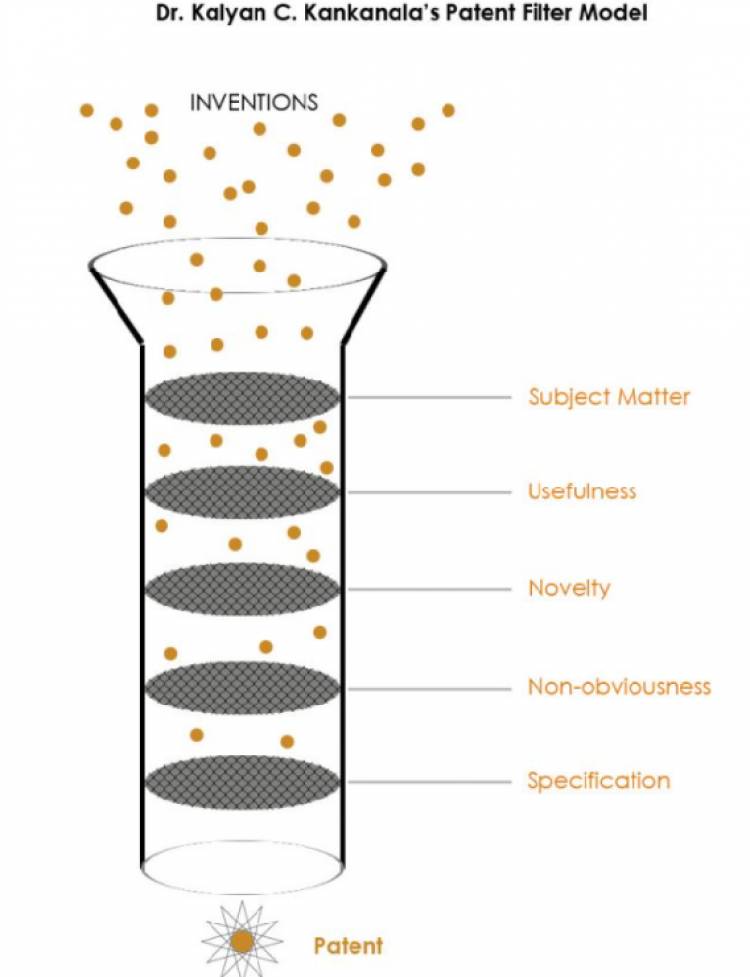What is Patentability Requirements?
One of the most essential parts of the patent law is a requirement of patentability of inventions. This article introduces what are the requirements needed to grant the patent in India as per the Patent Act, 1970. Also, we will discuss the various major jurisdictions in the world along with some case laws which used to define the legal provisions for patentability and inventive step.

One of the most essential parts of the patent law is a requirement of patentability of inventions. This article introduces what are the requirements needed to grant the patent in India as per the Patent Act, 1970. Also, we will discuss the various major jurisdictions in the world along with some case laws which used to define the legal provisions for patentability and inventive step.
Know more about, what are Patent law and its importance, see the video below -
Patentability Criteria According to the TRIPS Agreement:
TRIPS (Trade-Related Aspect of Intellectual Property) is one of the main controversial agreements of the WTO which has been argued worldwide in the developed and developing nations and also insignificant global institutions.
“The TRIPS Patents System is based upon -
(a) The main features of the TRIPS patent system are as follows: TRIPS supplies for patent safeguard for any inventions whether products or processes in all branches of technology provided that they are novel, necessitate an innovative step, and are proficient for the business appliance.”
Now, while joint statement on hand by the conglomerate associations of USA, Europe, and Japan to the GATT Secretariat in June 1988 for the period of the Uruguay Round Negotiations India is member of the WTO, therefore it is underneath a compulsory obligation to include the legal provisions of TRIPS in their own country’s laws.
Patentability Criteria in India:
Indian Patent Office and the courts used the Patent Act, 1970 (said Act) to decide whether a product or a process is eligible for a patent. Section 2(1)(m) of the said Act states that a patent may be granted for an “invention”. Moreover, the definition of "invention" given under Section 2(1)(j) of the said Act is a new product or process involving an inventive step and capable of industrial application.
Inventions which are Patentable:
The three major criteria of patentability are
1. New- This means that the particular invention should be novel and there must not be anything existing trace of it.
2. Inventive step – It must be unique in itself. An enhancement in the recent technology by an individual cannot be patented.
3. Industrial application – It must be put in value to the society and it should not be utilized for any illegal or immoral things.
Some types of discoveries like Newton's law of gravity or Einstein's formula (E = MC2) don't eligible for this. In simple words, no one can get a patent on the law of nature or any scientific principle.
Inventions that are non-patentable:
Also, Section 3 of the said act excludes that which is the subject-matter non-patentable.
-
Any method of agriculture or horticulture;
-
The finding of the unique machine, apparatus, or process;
-
An enhancement or detection of everything about atomic energy;
-
Any procedure under the category of medicinal, surgical, curative, or other treatment of human being, animals, or plants;
If Patentability requirements are fulfilled then only an invention is qualified to grant for the patent in India. To be patentable, the invention fulfills all the prerequisites, which ensure the merit of the invention for a patent grant from different angles. Some of the requirements are comparatively simple to fulfill when evaluated with others, but all of them are similarly essential for purposes of patentability assessment.
Patentability requirements may be seen as filters set in sequence for the intention of analyzing the patentability of inventions. Only inventions that pass through all the filters will be eligible for approved patents by the patent office. The following figure illustrates a view of the model of the patent filter.

Biswanath Prasad Radhye Shyam V. Hindustan Metal Industries
-
The existing system of manufacturing utensils (including headstock and tailstock) had a potential risk to the worker as the utensils used to fly off from the headstock. Hence, to instigate advancement, pragmatism pace, further safety, and superior finishing, Purushottam Das, who is a co-owner of Hindustan metal Industries, build the invention of a tool and procedure for the manufacture of utensils, in 1951.
-
The invention was patented under the Indian Patent and design Act, 1911 with No. 4636851, effective from 13-December- 1951, the plaintiff acquired the private and special right of utilizing this technique and manner for the making of devices as an assignee.
-
It's important to note that, to become patentable, the following criteria must be satisfied.
-
An enhancement on somewhat known should be something more than a simple workshop upgrading.
-
Must independently satisfy the test of the invention or an inventive step
-
The improvement or the combination improvement must produce a new result, or a news article, or a better or cheaper article than before.
-
A simple compilation of more than one numeral or things, not relating the work out of any creative faculty, does not succeed for the grant of a patent.
Patentability criteria in the US:
In the United States, to meet the litmus trial of patentability criteria, a proposed invention should fulfill a three-pronged test of Novelty, non-obviousness, and utility. Likewise, the invention should not have been openly using or deal with in the US for over one-year preceding the date of documenting the patent application. The US patent law expresses that creation is considered self-evident, " The “utility” pre-requisite is most likely the least demanding rules to meet as for all intents and purposes any effectiveness is measured to satisfy the “utility” requisite.
KSR V. Teleflex Inc.
This case included the use of electronic sensor-based customizable gas pedals. Teleflex blamed KSR International for utilizing a gas pedal innovation guaranteed in one of Teleflex's licenses. KSR counter contended that Teleflex ought not to have been conceded a patent for that pedal in any case, as the mix of an electronic sensor and gas pedal innovation was clear founded on prior art.
Determination of whether the subject matter of a patent is non-obvious, matters is the objective reach of claim. If the claim extends to what is obvious then it's invalid under $ 103.
One of the ways to prove a claim is non-obviousness- nothing existed at the time of invention and a known problem for which obvious solution enclosed in the patent’s claim.
Hence from the above discussion, the idea of patentability standards for any development in any field of art is clear to the extent that it relates to India just as in the US.
Patentability criteria in Europe:
The European Patent Convention (EPC) advances four Criteria of Patentability. An innovation is patentable if, (i) it is novel (Article 54 EPC), (ii) includes an inventive step (Article 56 EPC), (iii) is fit for industrial application (Article 57 EPC), and (iv) isn't rejected by Article 52(2) and (3) EPC.
-
Novelty:
The novelty in EPC is marginally stricter than US law. As per EPC, the development should not be found at a past date in any issue, regardless of whether an article, a process, the data have not been made accessible to the public whether in European nation or anywhere in the globe.
-
Innovativeness:
Development should include an inventive step to be protected. As per the law, an individual with standard cerebrum and ability in the art ought unable to infer the claims of the invention. This model is fundamentally the same as the US Criteria of non-obviousness.
-
Industrial application:
Innovation should have an industrial application to be licensed. Section 4 expresses that an invention will be taken to be fit for modern application on the off chance that it very well may be made or utilized in any sort of industry including farming. This measure is like the US Criteria of utility.
Patentability criteria in Japan:
Article 2 of the Japanese Patent Act says, "Invention" in this Law implies the exceptionally progressed production of specialized thoughts by which a law of nature is used.
Article 29 discusses as follows.
Section (1) Any person who has made an industrially applicable invention may obtain a patent, therefore, except in the case of the following inventions:
(ii) Inventions that were widely recognized in Japan or in another place before the filing the application for patent;
(iii) Inventions that were widely employed in Japan or to another place before the filing the application for patent;
(iv) Inventions that were illustrated in a distributed publication or made available to the public through electric telecommunication lines in Japan or elsewhere before the filing of the patent application
Section (2) says that Where an invention could without much of a stretch have been made, before the documenting of the patent application, by an individual with standard skill in the art to which the innovation relates, based on an invention or inventions alluded to in any of the segment of sub-section (1), a patent shall not be granted for such an Invention despite sub-section (1).
Conclusion:
The whole process of filing a patent is complex and lengthy, one should be bear in mind the essential it has. With the digital enhancement, it is now able to simplify the process of getting a patent.
Having a patent guarantee, anyone cannot claim rights over the innovator's invention. If there is any infringement tries to do, then the inventor can take assistance from legal provisions by qualified legal professionals and avoid the hurdles that can become an obstacle in the growth and development of an individual or company.
BY -
Sushama Dilip Mhasurle
1 AIR 1982 SC 1444












